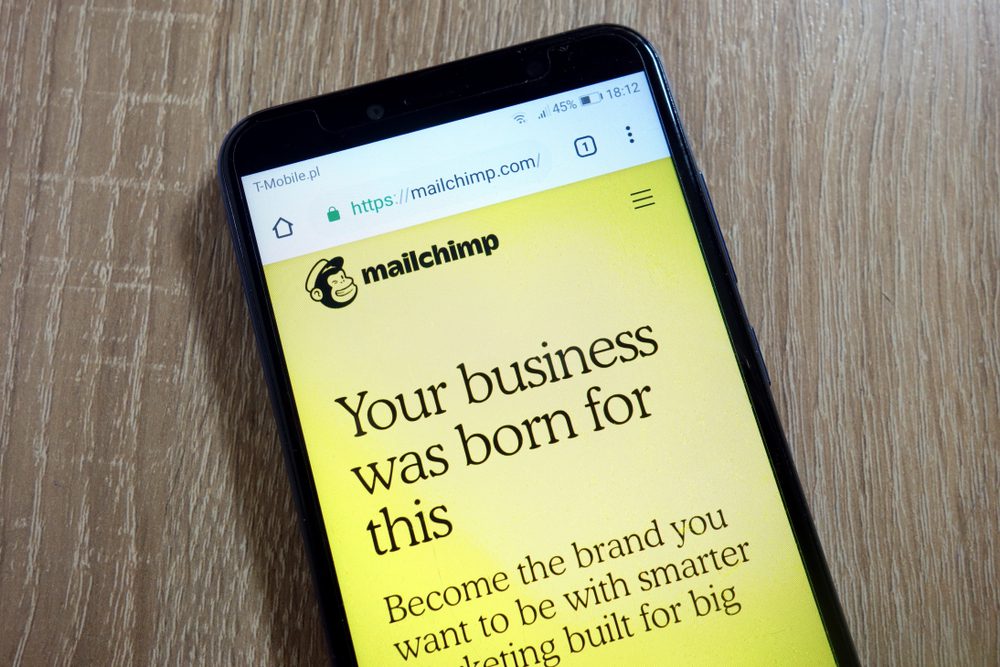
The Benefits of Using Mailchimp For eCommerce
You will come to know that there are multiple ways to achieve your marketing objectives once you connect your business with Mailchimp. Once you integrate Mailchimp into your online store, you will grow your company sooner than ever. Here’s what you can expect with using Mailchimp:
Finding New Customers
Mailchimp does an excellent job of bringing new customers to your eCommerce website with ads and pop-up forms.
Pop-Up Forms
This sign-up form tends to appear on your site after a set delay. These customizable pop-up forms easily blend in to match your brand’s look. It is also flexible enough for adding promo codes and imperative messages.
Ads
With Mailchimp, you can also create multiple ads on Google, Instagram, and Facebook. You can do so from your account in Mailchimp without any extra fee. We advise you to set your advertisements to target certain contacts and go beyond your subscribers to gain more clients.
Product Promotion
Mailchimp has tons of tools for assisting you in selling more products. Make sure to utilize data of e-commerce from your connected website for personalizing your messages. In this way, you end up recommending the correct products to the correct customers.
Abandoned Cart
The messages of abandoned carts help remind customers about completing a purchase they began in the store. Here, the messages are sent either in series of reminders or a single mail. We think you should add a code of discount for incentive purposes.
Personalized Product Recommendations
We believe it’s clever to use history data of old purchases for offering your customers suggestions and options for their future purchases. Include it in any abandoned cart messages, order notifications, and emails. The more data information you possess, the better it tends to work. We believe it’s fitting for stores, which possess about 500 processed orders in the previous year and feature ten products.
Product Retargeting Emails
Product retargeting tends to send a message regarding the last product a client viewed on your website. You can keep a tab on all the customers that browsed your shop but didn’t pull a purchase. It helps in promoting newer additions and best-sellers to your shop.
Order Notifications
The ordering activity present in your store is responsible for triggering these emails. It offers crucial updates to your customers regarding their purchases. You can also customize shipping confirmations, receipts, and invoices, along with other messages to blend in with your style. Start inserting product recommendations, which your clients will love.
Boosting Customer’s Loyalty
Your store will expand as you connect with newer people. With Mailchimp, you can expect customers to keep coming back. You need to send automation that is purchase-based and create segments for reaching your target audience. You also need to utilize data testing to know what works.
Triggered Emails
These emails tend to automatically respond to the purchase activity of your customer. Make sure to set up the automation for following up after the purchases, reward discounts to buyers, and recommend all the related products. The automation will communicate with your client, allowing you to focus on other kinds of stuff.
Customer Segments
Segments consists of custom audiences that are based on other shared data, purchases, and demographics. You can either build your own or pick a pre-built segment for quickly targeting 1st-time buyers, customers with no recent purchases, or top customers.
A/B & Multivariate Testing
It sends two distinct versions of the exact campaign to observe how tiny changes affect the revenue that your emails are generating. With the pro multivariate campaign Mailchimp, you can easily test over eight distinct versions of the single message.
Sales Tracking
As you start to incorporate more tools in your marketing plan, it is crucial to keep track of the ROI (Return on Investment). The e-commerce on Mailchimp helps report the data details to your shop’s order history and purchase activities. We advise you to pay close attention to what your customers are buying and the amount of revenue every campaign is making. Now, you can utilize this data for creating even more particular segments and highly effective marketing.




